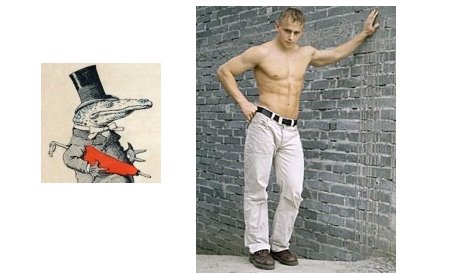A few years back I read about the 2004 experiments in Vienna demonstrating quantum entanglement. This is explained in a 2005 article in the publication LaserFocusWorld:
One of the most bizarre predictions of quantum mechanics is that a pair of particles can become entangled, which means that measuring the properties of one particle instantly determines the state of the second no matter how far apart the two are.For the layman like myself, this seems to mean that information, such as the results of measurements made on a photon, say, in one place, "is transmitted instantaneously" to another photon in another place. That is, when similar measurements are made at the second place at the same time, the same results turn up. And all this without the hindrance that the speed of light represents for any kind of movement. To make sense of "immediately", imagine that the two sites are equidistant from a third site with a clock, with which each site synchronizes its local clock.
Einstein called this "spooky action at a distance". In their famous 1935 EPR paper (Einstein, Podolsky, Rosen), the fact that such a result was predicted by quantum mechanics was presented as a fatal flaw in the theory. Einstein fought quantum mechanics all his life.
It occurred to me, considering the Vienna experiments, that what appears to be two particles, say two photons, might be imagined as being two distensions in space-time created by one "object" - such as what happens when you inflate a balloon, then separate two fingers of one hand and stick these into the balloon. A two-dimensional observer on the surface of the balloon would see two apparently independent distensions in his world. One movement of the hand, the fingers held rigid, would seem to that observer as oddly synchronized movements of two things with no physical connection between them.
This is a fairly obvious idea to come up with, if you've ever dabbled in algebraic topology, as I have. That kind of imagery is used everywhere in Brian Greene's popularizing works on string theory. I imagined some physicist must have already tried to make mathematical sense out of this quantum phenomenon on these lines. Sure enough, I just now read, in a footnote to Morin's La méthode from 1977, that the theoretical physicist Bernard d'Espagnat had proposed such an interpretation in 1972. He later wrote a book about "veiled reality".
We're now close to the payoff. The Vienna team had only the courage to top up their pocket money:
In 2004, a team from the University of Vienna (Austria) used polarization-entangled photons to send a secure quantum key between the Vienna City Hall and a large bank through 1.45 km of fiberoptic cable laid through the city’s sewer system.7 They tested the arrangement by using it to transfer a €3000 donation to the lab’s bank account (see Fig. 2).But d'Espagnat has been investing in ideas for a long time. Just last month he cashed in, winning $1.4 million from a religious foundation for "work which acknowledges that science cannot fully explain the 'nature of being'".
I used to think I would have made a good Evangelical preacher. Pity I didn't go on with mathematics either, since there seem to be lots of dollars-for-jesus floating around.



